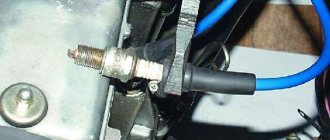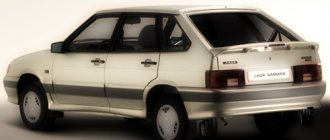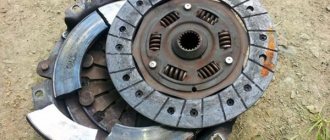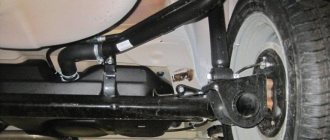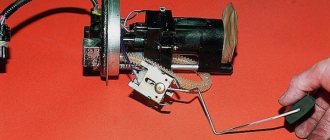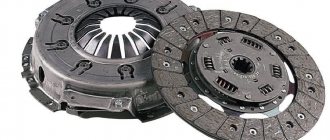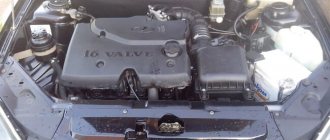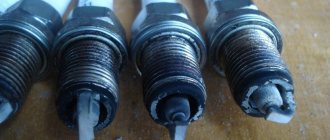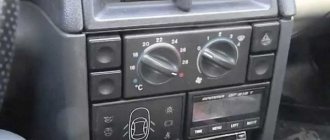To start driving a car, you must first start the engine - every car owner knows this, and even people who are very far from automotive topics. On most cars, the electric charge from the battery is supplied to the starter through the ignition switch contact group. You need to insert the key into the lock, turn it to the first position to turn on the ignition, then to the extreme position. Only then will the starter work. But there are situations when the key does not turn in the ignition. Don't panic. This problem can be solved.
There are several reasons why this annoying malfunction occurs. Let's look at these reasons and repair methods.
Lockout triggered
Any modern car is equipped at the factory with a special steering wheel locking mechanism. This is one of the protective measures that are designed to prevent attackers from stealing a car. If this blocking system has worked, then naturally the key in the lock will not turn, so that it will not be possible to turn on the ignition and start the engine.
In this unpleasant situation, experienced car owners recommend looking for a steering wheel position in which both the steering column and the lock will be unlocked. This can be done by inserting the key into the lock and simultaneously turning the steering wheel in different directions. This is the only way to turn the key to the engine start position. In one of the positions it unlocks.
What is he like?
Here is a unit used on GAZ, ZIL, Moskvich, Volga cars and other models produced in the USSR.
The ignition switch is used to connect consumers of electrical energy to the vehicle’s on-board network; it turned on the starter to crank the crankshaft and start the power unit. The design of the device did not have any means of protection against car theft. In case of failure, it is enough to remove the wires from the contact plates, to continue movement, just short them together.
If you can’t turn the starter, don’t despair too much. This can happen due to deformation of the key itself or jamming of the larvae. Before disassembling the switch, try resuscitation. WD fluid is well suited for this purpose; it should be injected into the cavity of the faulty ignition switch. Sometimes lightly tapping the body restores the switch's functionality. Difficulties in turning the key may be caused by natural wear and tear on the lock slats. If there is a second copy of the key, compare them and make sure the products are identical. If noticeable wear is detected, order a duplicate of the product.
The appearance of the first VAZ models showed drivers a completely new design of the device. He had a vehicle anti-theft device. After pulling out the key, the steering wheel locked, making it impossible to continue driving. In the era of fuel shortages at gas stations, drivers turned off the ignition while driving to save gasoline; as a result, the steering was blocked, leading to emergency situations.
The photo shows a representative of the VAZ 2101-2107 family of switches.
This model is not a problem-free product; breakdowns occur in such units. Moreover, problems occur in the contact group, the locking mechanism, jamming occurs, and the lock cylinder falls apart. Contact group problems are easily solved. The wires are removed, and consumer circuits are switched manually. You can continue driving for a long time; the car’s protection against theft becomes practically zero.
To prevent the steering wheel from jamming, you should remove the inoperative device from its seat. This operation will require several Phillips and flat blade screwdrivers. First of all, you should remove the plastic steering column cover and disconnect the wiring. The switch is fixed with screws, they should also be unscrewed. Next, use a thin screwdriver with a flat blade to press the latch in and remove the product out.
To replace the larva you need to disassemble it, you will need:
- Drills with a diameter of 2 and 4 mm;
- An awl with a strong tip, 30-40 mm long;
- Small side cutters, knife.
Procedure for replacing the larva:
- The chrome cover is rolled in three places; it needs to be bent and removed;
- A locking pin is found under the cover; it should be removed;
- A hole is drilled next to it with a 4 mm drill approximately 2 mm deep;
- In this recess, a hole is drilled with a smaller drill, but at an angle to the pin;
- When the drill reaches it, drilling is stopped;
- Now an awl comes into play, they push the pin out;
- Use the sharp tip of a knife to remove the faulty larva.
Reassembly must be done in reverse order.
When contacts freeze
Russian winters are so severe that in severe frosts the castle also freezes solid. A huge number of situations when the key does not turn in the ignition occur in winter, when temperatures drop below -20 degrees. The thing is that the lock mechanism can accumulate condensation in winter. And then, when the car sits in the cold for a while, these droplets of liquid crystallize, thereby blocking moving parts. As a result, the engine will not be able to start.
In this case, experienced car owners advise simply trying to warm up the lock assembly. This can be done using a regular hairdryer or any other device - just direct a stream of warm air into the keyhole. It is not recommended to try to defrost the lock with hot water or other liquids that freeze in the cold.
The most effective and efficient option is to heat the key with a lighter or a match. The hot element is inserted into the lock and then carefully tried to turn it. If the key does not turn in the ignition the first time (and most often this is what happens), then you need to repeat this operation two or more times.
To prevent the locks from freezing with the onset of cold weather, experts recommend injecting brake fluid into the lock with a syringe and a needle. In the spring, this “well” is thoroughly cleaned with carburetor cleaning fluid. If this is not done, the lock's lubricant will accumulate dust and eventually cause a blockage. This can also cause blocking.
Common faults
Before you check and disassemble the ZZ at home, you need to understand why the device jams, jams, or generally does not work.
The main breakdowns that require ignition switch repair are listed below:
- The contacts have oxidized, which is due to moisture getting into the structure of the unit or dampness in the car interior as a whole. If for this reason the seal can block or jam, then this will subsequently lead to more serious damage.
- Another malfunction that results in jamming and the ability to turn the key or steering wheel is a mechanical failure. Malfunctions of the mechanical ignition switch include wear of the elements, manufacturing defects, or dirt getting into the structure. Moreover, dirt ingress is the most common problem due to which the key cannot turn and the steering wheel, accordingly, is blocked. In this case, if the steering wheel and lock are locked, the device will have to be removed and disassembled for further cleaning.
- The unit may not operate due to contact burnout, which in turn is caused by voltage surges in the on-board network. The drops themselves usually occur when the engine starts.
- Deformation of the starting key or elements inside the structure. In this case, you will need to either repair the ignition switch or replace it.
Blockage in the lock
The driver goes outside, opens his car, inserts the key and feels that the key does not turn in the ignition, and it is no longer winter outside. It happens that wells become clogged. During operation, a large amount of various debris easily gets into them. Dirt actively collects (especially if the mechanism has been lubricated with thick lubricants or oils to improve operation).
Ideally, you need to disassemble and thoroughly clean the lock. But this is not always possible. Experienced drivers, in order to continue operating the car without visiting a service station, solve the problem with the universal remedy WD-40.
The tube from the can is directed into the well and filled in until clear liquid comes out from inside. WD often copes with even heavy dirt. But if suddenly it doesn’t work out, you’ll still have to disassemble the mechanism.
Diagnostics and repair
If the ignition switch is broken and the key does not turn, you can try to repair the unit without replacing it. Of course, if this is possible (the author of the video is the Auto Electrician HF channel).
Solving the problem without replacement
First of all, you should diagnose the condition of the node; for this you will need a multimeter. Removing the ignition switch is an individual procedure for each car.
Before removing the ignition switch, you need to familiarize yourself with the technical features of this unit specifically in your car in order to prevent possible problems during repairs:
- First you need to level the steering wheel and disconnect the battery, while the key in the 3Z is turned to position 0.
- Under the steering wheel there are several bolts that secure the decorative trim of the steering column.
- Next, the 3Z fixing bolts are unscrewed, after which the key should remain in the installed position. Depending on the vehicle, there may be more fixing bolts, and the overall fastening system may be different. In any case, you need to dismantle the 3Z and disconnect all wires from it. When disconnecting wires, they must be marked so that later during installation there will be no installation problems.
- After this, when the wire blocks are disconnected, using a tester, you will need to diagnose the serviceability of the terminals in the block.
- As for repairs, after completing the steps, the ignition switch is disassembled. A device can break down for various reasons, but troubleshooting is always the same. To replace failed elements, the structure must be disassembled; to do this, one of the component parts of the housing is disconnected. By doing this, you will be able to see the failed system components and repair or replace them. When assembling, we must not forget about lubrication - all moving components of the system must be lubricated.
Wear of contact group surfaces
During the operation of the car, the place where the metal elements come into contact with each other is wiped off. Due to this, the gaps grow. The key itself and the elements of the lock mechanism may become worn out.
In the first case, if the key in the VAZ ignition switch does not turn, visually check the condition of the key. If its teeth are rounded, and its width or length has noticeably decreased, then it should be replaced. For comparison, take a second spare key. But it’s better not to use it on a daily basis. Experienced motorists recommend making a duplicate. If you continue to use the second key, then someday the situation will repeat. And then you will have to change the lock.
It must be said that you can find out about a worn key or lock much earlier than jamming occurs - if the key in the ignition switch does not turn well, then this is the first call. If the key is stuck due to abrasion, you can usually try to find a position where the key can engage the secret part of the lock. To do this, carefully turn and press the key into the lock hole many times.
Where is the ignition switch located on the “fourteenth”
In VAZ-2114 cars, the ignition switch, unlike the “classics”, is located not on the dashboard, but on the right, on the steering column. It is covered with a plastic casing on top, so only the upper part of the “larva” is visible to our eyes. The VAZ-2114 ignition switch consists of five main parts:
- steel body;
- locking mechanism;
- locking device;
- contact group;
- key
The device is placed in a steel case, which is designed to protect it from hacking. As for the locking mechanism, it is practically no different from the door lock we are used to.
The locking device allows you to lock the steering shaft in the absence of a key. In this simple way, it protects the car from theft. The contact group is an element that is responsible for starting the engine and its systems. The VAZ-2114 ignition key is used to unlock the locking device and activate a group of contacts. Without it, it is impossible to start the engine without disassembling the device.
Deformations
Often the main cause of problems with the operation of the lock is the key. It is subject to deformation. Damage occurs in various cases (for example, when a car owner opens beer bottles with this key).
If the element is bent, you can straighten it with a wooden or rubber hammer. After alignment, it is worth trying to insert it into the well again.
Deformations of the lock's secrets occur even more often. This leads to the ignition switch breaking. In this case, only dismantling the lock and removing crumpled springs and slats will help. Often in modern cars, only complete removal of all the lock's secrets helps. After this operation, the car starts even with an ordinary screwdriver. Naturally, if the ignition switch is torn out and the key does not turn, the Mercedes can be easily started even with a Swiss Army knife. This is the only option to get to the service and replace the element.
Not all locks can be removed without dismantling the entire assembly. Often you even have to remove the ignition switch from the steering column. At this stage, certain problems may arise with unscrewing the bolts - there are broken heads. First of all, the caps are impacted with a hammer and chisel, and then they are worked with pliers.
alex77477 › Blog › Replacing the ignition lock cylinder of a VAZ 2107
Preface to the description. The old lock lost its second key. I bought a new lock, it lay in the glove compartment almost all summer, there was no time. I got ready, removed the old lock, installed a new one, but it does not block the steering column. That was a bummer! And so he was turned and turned, and so on, well, no matter what. I put in the old lock - everything is fine. I measured all the proportions with a caliper - one to one. I left the new one and drove without blocking for now. And then I decided to take a closer look at the old castle. And here is the result of all this fiddling around - I removed the cylinder from the new lock and put it on the old one, everything works! At the same time I changed the contact part of the lock. Necessary tools: 1. Drill 2 - 2.5 mm. 2. 4 mm drill. 3. Durable awl (preferably hardened), tip length 3-4 cm. 4. Side cutters for microelectronics. 5. Sharp knife. Procedure: 1. On the top cover (chrome plated, Fig. 1), press out 3 folds and remove the cover. 2. Under it, on the side of the locking rod, there is a locking pin. 3. Carefully, next to the pin, drill a recess 2 mm deep with a 4 mm drill. 4. After this, using a 2 - 2.5 mm drill, in this recess, we drill a thin wall towards the pin. 5. Having reached the pin, stop drilling. 6. Use an awl to rest against the pin and lift it above the lock body. 7. Use side cutters to pry up the pin and pull it out of the body. 8. Using a sharp knife, from the side of the removed pin, pry up the larva and pull it out. That's actually all the work.
Other reasons
Sometimes it is much easier to solve a problem, since the reason is very trivial. For example, if on models with automatic transmission the key in the ignition does not turn (“Opel Vectra C”, for example), then you should not exclude a problem with the position of the box. Some car models are designed in such a way that the key cannot be turned until the selector is in neutral or park.
Another household method that ordinary car owners use in such a situation is to lightly tap the key. This helps if he has a hard time getting into the grooves.
Possible causes of ignition switch failure
Before we talk about how to connect and remove the ignition switch on the "seven", let's look at the main malfunctions of the unit. The device itself in these cars consists of two parts - a mechanical one, that is, the one where the key is installed, and a contact one, to which the wires are connected. As practice shows, replacing the ignition switch on a VAZ 2107 is carried out in the event of a jammed unit or during an attempt to steal it. If the lock is jammed, you won't be able to start the engine anyway, at least not with the key. It is also necessary to change the node if the keys are lost.
Also, the reason for replacement may be the contact group - it fails as a result of a short circuit or oxidation of the contacts; insulation failures occur much less frequently. Therefore, in order to change the unit with your own hands, you need to understand its structure. In general, the procedure for replacing a node is not particularly complicated, we will talk about this below (the author of the video is Region 4253).
Renovated or new?
It would seem that what could be simpler than replacement if the key does not turn in the ignition? Whether it’s a Toyota or a domestic VAZ, it doesn’t matter. But it's not that simple. Buying a lock at a salvage site is not suitable for many people, since a used element will be in the same condition and is unlikely to last long.
In addition, the other key from the new ignition switch will not fit the trunk and glove compartment lock. It will also have to be registered in the car (does not apply to domestic models). Of course, you can carefully disassemble the old key and remove the chip, and then replace it with the new one. But not everyone succeeds in this. The most optimal solution is to repair the lock cylinder. So, the old keys will remain. And even if you need to cut a new key case, it will still be created according to factory data.

